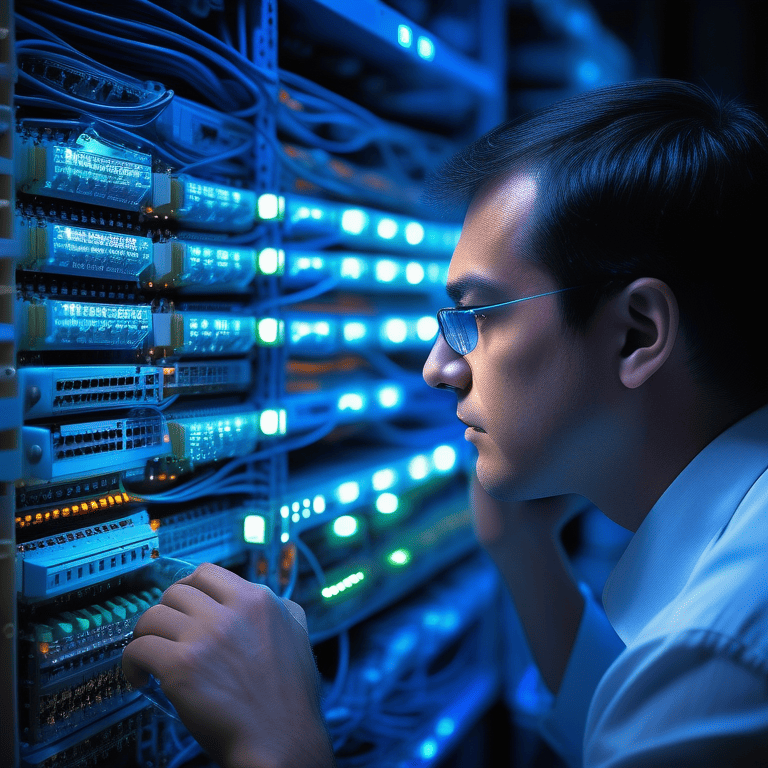
AIoT, or Artificial Intelligence of Things, is the transformative convergence of Artificial Intelligence (AI) and the Internet of Things (IoT). This powerful combination integrates AI’s cognitive abilities with the connectivity of IoT, enabling advanced analytics, automation, and intelligent decision-making. AIoT bridges the gap between the virtual and physical worlds, creating smarter and more connected systems across various domains. Essentially, AIoT represents the synergy between intelligence and connectivity, ushering in a new era of innovation and efficiency.
Defining AIoT: The Synergy of Intelligence and Connectivity
AIoT leverages AI algorithms to empower IoT devices with smart, efficient operations. This synergy enables data-driven decisions, predictive maintenance, and real-time insights. By integrating technologies such as machine learning and data analytics into IoT systems, AIoT redefines traditional processes, enabling intelligent decision-making and automation. The seamless interaction between AI and IoT, particularly through computer vision and AI-powered reasoning and learning capabilities, opens up countless possibilities across industries.
The Evolution of AIoT: From Concept to Reality
The journey of AIoT from a futuristic concept to a tangible reality has been remarkable. Initially viewed as an innovative idea, AIoT has rapidly evolved into real-world applications, reshaping industries and revolutionizing business operations. The fusion of AI and IoT technologies has led to unprecedented advancements in automation, analytics, and connectivity. AIoT solutions continue to drive innovation, propelling industries toward a more interconnected and intelligent future.
How is AIoT Different from IoT?
AIoT differs from traditional IoT by integrating artificial intelligence capabilities, enhancing data analysis and decision-making processes. The synergy of intelligence and connectivity in AIoT enables more advanced automation and predictive functionalities, setting it apart from conventional IoT systems. AIoT systems can learn from data, make informed decisions, and optimize operations, whereas traditional IoT systems primarily collect and transmit data without the added layer of AI-driven intelligence.
Transforming Industries with AIoT
Life Revolution: AIoT in Smart Homes
AIoT is revolutionizing smart homes by transforming them into intelligent domains where connected devices seamlessly communicate to enhance everyday living. Automated temperature control, smart security systems, and AI-powered virtual assistants are just a few examples of how AIoT empowers households with unprecedented convenience and efficiency. These technologies optimize energy usage, ensure a secure environment, and adapt to user preferences in real-time, making smart homes an essential part of our interconnected future.
Enhancing Manufacturing Efficiency through AIoT Integration
Integrating AIoT in manufacturing processes revolutionizes efficiency by merging industrial automation with intelligent systems. AIoT enables real-time monitoring of machinery, predictive maintenance, and quality control through AI algorithms, IoT devices, and data analytics. This reduces downtime, increases productivity, and minimizes costs. AIoT-powered smart systems can analyze data, detect patterns, and make informed decisions, transforming traditional factories into smart, efficient operations.
Key Components of AIoT Systems
Role of Sensors and Devices
Sensors and devices are the backbone of AIoT systems, enabling data collection for analysis. From temperature sensors in smart buildings to GPS trackers in autonomous vehicles, these components provide crucial input for AI algorithms. They form the foundation for machine learning and deep learning processes, driving intelligent decision-making in real-time scenarios. IoT devices act as the nodes in this interconnected network, facilitating seamless data flow between devices and the central AI system.
The Importance of Data Analytics in AIoT
Data analytics is central to AIoT. Advanced algorithms enable AIoT systems to analyze vast amounts of data from IoT devices in real-time, extracting valuable insights for decision-making. This enhances quality control, risk management, and operational efficiency across various industries. The synergy of artificial intelligence and IoT through real-time data analytics revolutionizes business operations, paving the way for smarter, more efficient processes.
The Technical Foundations of AIoT
Exploring Edge Computing in AIoT
Edge computing plays a pivotal role in AIoT by enabling data processing closer to the source, reducing latency, and enhancing real-time decision-making capabilities. This decentralized approach ensures swift generation of critical insights without relying solely on distant data centers. Edge computing optimizes operational efficiency by managing data flow and processing efficiently, making AIoT systems ideal for applications requiring quick reaction times and minimal latency.
Cloud Computing’s Role in AIoT Architecture
Cloud computing provides scalable storage and processing capabilities essential for handling vast amounts of data generated by interconnected devices. Through cloud platforms, AIoT systems can efficiently manage data analytics and machine learning algorithms, enabling real-time insights and decision-making. Cloud services ensure seamless connectivity and accessibility to resources from anywhere, fostering agile and responsive AIoT applications.
AIoT Benefits to Businesses and Consumers
Improving Businesses Operational Efficiency
AIoT plays a crucial role in improving operational efficiency across various industries. By integrating AI capabilities with IoT, businesses can enhance processes and decision-making. For example, in industrial automation, AIoT enables real-time monitoring of machinery, predictive maintenance, and quality control, reducing downtime, increasing productivity, and minimizing costs. AIoT-powered smart systems can automatically analyze data, detect patterns, and make informed decisions, leading to more efficient operations with minimal human involvement.
Enabling Predictive Maintenance
Predictive maintenance is a critical application of AIoT that helps businesses optimize maintenance strategies and avoid costly equipment failures. AIoT enables the collection and analysis of data from sensors embedded in machinery, predicting potential issues and scheduling maintenance activities proactively. AI algorithms analyze patterns and anomalies in the data to identify early warning signs of equipment failure, allowing businesses to take preventive action and improve operational efficiency.
Real-World Applications of AIoT
Smart Agriculture: Using AIoT for Crop Monitoring
AIoT is revolutionizing agriculture by leveraging sensors and IoT devices to monitor and optimize crop growth. AIoT systems collect data on soil moisture, temperature, humidity, and other environmental factors, enabling farmers to make data-driven decisions. AI algorithms provide insights on irrigation scheduling, fertilizer application, and disease detection, optimizing resource usage, reducing water waste, and increasing crop yield.
Healthcare Innovations Powered by AIoT
AIoT 正在透過實現遠端患者監控、個人化醫療和高效的醫療保健管理來改變醫療保健。由 AIoT 驅動的可穿戴設備和感測器可以持續監測生命體徵,在緊急情況下向醫療保健專業人員發出警報。人工智慧演算法分析患者數據以識別模式和異常情況,從而實現及時幹預和個人化治療計劃。人工智慧和物聯網在醫療保健領域的整合正在使該行業更加高效、以患者為中心且更具成本效益。
克服AIoT部署的挑戰
解決安全問題
安全性問題在 AIoT 部署中至關重要。實施加密、身份驗證協定和安全資料傳輸等強大的安全措施對於降低風險至關重要。確保資料隱私並防止未經授權的存取對於 AIoT 的廣泛採用至關重要。持續監控和威脅偵測機制對於及時識別和回應潛在的安全漏洞是必要的。
解決互通性問題
互通性問題給 AIoT 生態系統帶來了重大挑戰。不同的物聯網設備和系統通常使用專有協定和標準,阻礙無縫通訊和整合。需要標準化工作和採用開放協議來應對這項挑戰。建立通用標準和協議使不同製造商的設備能夠無縫協作,從而釋放 AIoT 的全部潛力。
結論
AIoT 中人工智慧與物聯網的融合正在為各個領域的產業帶來革命性的變化。這種協同作用將智慧與連接相結合,提供諸如提高營運效率、預測性維護和即時數據分析等優勢。隨著 AIoT 改變企業和消費者體驗,解決安全問題和互通性問題等挑戰至關重要。透過利用 AIoT 的功能,企業可以提高效率、預測洞察和創新應用,為更智慧、更互聯的未來鋪路。





